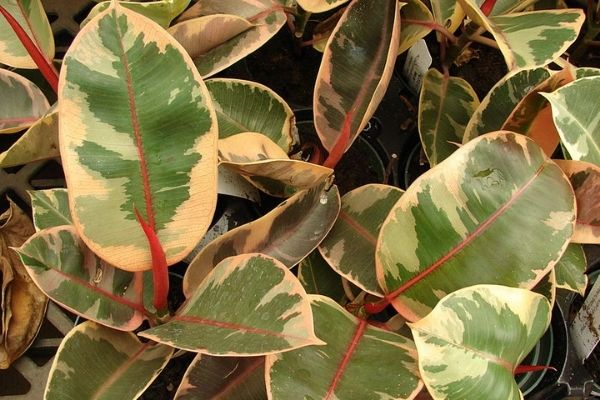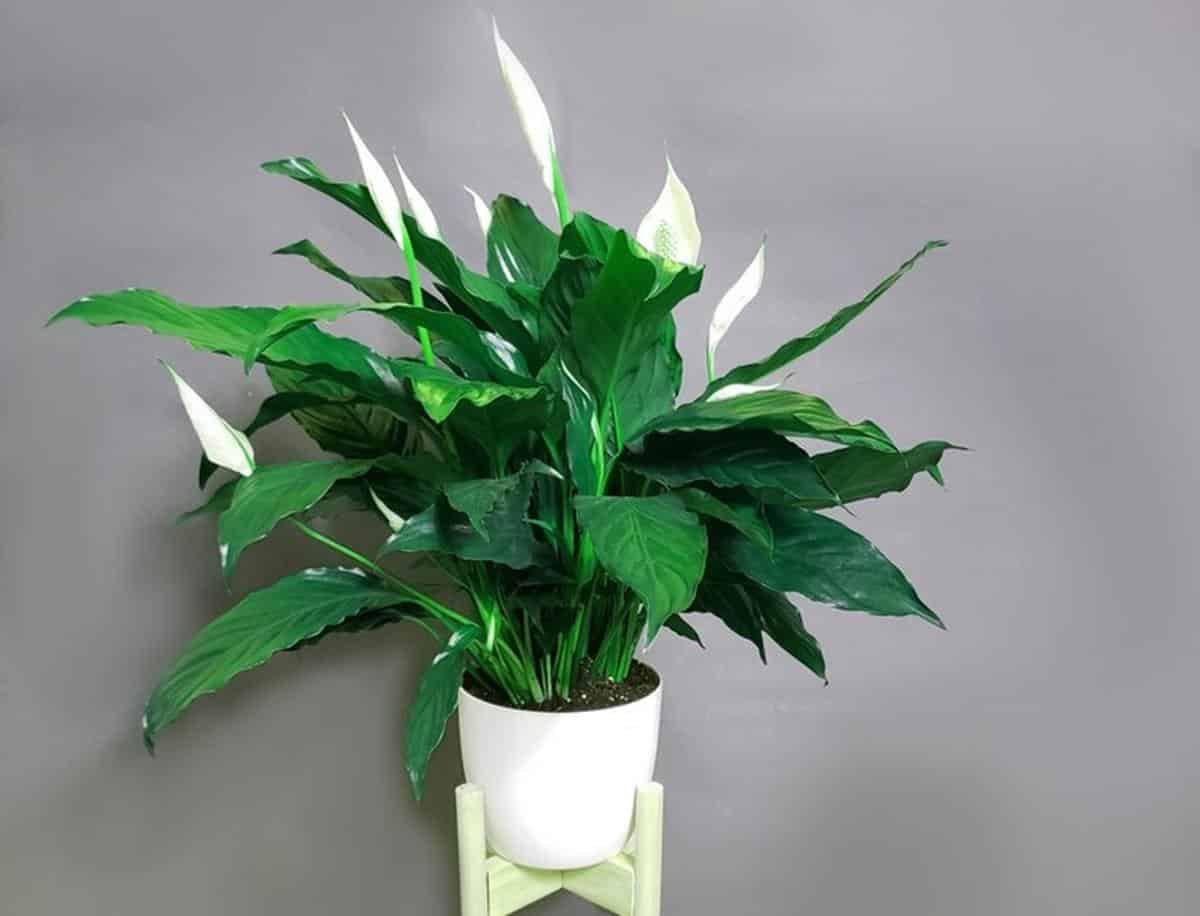
If either big or small brown spots appear on the leaves of your variegated Ficus elastica, don't panic because the plant can still be fixed. These brown spots are actually pretty common and can be treated in a couple of ways.
The variegated Ficus elastica, is the variegated cultivar of the common rubber tree. It is a hardy indoor plant that can provide a beautiful accent to any room with its large green leaves and its tropical shape and appearance.
This is a popular indoor plant for good reason due to its hardiness as well as its simple care and satisfying beauty.
The most common reasons for brown spots on the leaves of your variegated Ficus elastica are usually related to incorrect growing conditions or perhaps overzealous care. However, there can be other reasons for this issue as well, from diseases to improper potting of the plant. This is a plant variety that requires little care to grow properly.
Features image CC Forest & Kim Starr.
Contents
Why Does My Variegated Ficus elastica Have Brown Spots? (+Fix)
Pest Problems
Nearly any kind of common plant infestation can affect your variegated Ficus elastica. From aphids, to scale insects, to mealy bugs, your variegated Ficus elastica might experience brown spots related to their presence. Aphids are some of the most common culprits for browning of the leaves in a spotted pattern on houseplants.
Thankfully, these pests can be treated quite effectively with safe pesticide sprays. These chemical compounds are typically safe for everyone else in your house to come into contact with, but they are not safe for the various kinds of insects that might be attacking your plants.
Most of these treatments come in handy spray bottles that are perfect for indoor use.
Fungal Leaf Spot Disease
The most common fungal leaf spot disease for many plants, not just your variegated Ficus elastica, is Anthracnose. This is a fungal disease that causes concentric rings on the leaves that turn brown over time. The leaves may even fall off if this fungal infection gets bad enough.
This is a condition that is easy to treat with a fungicide that will kill the organism that is attacking your plant and give it the chance to grow new, healthy leaves.
Fungal diseases are always hard to eradicate when they have not been treated early, so making sure to get on top of this kind of ailment is essential to the long-term health of your variegated Ficus elastica.
Using the Wrong Soil
Variegated Ficus elastica is picky about what soil it is planted in. This plant is native to parts of the world where there is not a lot of rainfall, followed by long periods of drought. This means that you need to use the right kind of soil to make sure that your variegated Ficus elastica is happy in its pot.
Usually, it is best to plant your variegated Ficus elastica in a potting mix that is made for cactus. You can back this up with a good pot that will drain properly and a saucer that you can empty and replace as needed.
You always want to maintain an environment without standing water and that offers enough drainage to keep the variegated Ficus elastica from getting waterlogged even for a brief time.
Watering Problems
Another cause of brown spots on the leaves of your variegated Ficus elastica can be watering problems.
This plant will not thank you if you overwater it. If you are seeing brown spots on the leaves of your variegated Ficus elastica, there are two possible reasons for this: either you are watering too much or not enough.
Watering too much will lead to dark spots, brown leaves, and root rot. However, if you are underwatering, the tips of the leaves might turn brown. A good rule of thumb is to water every week or whenever the top half-inch of soil feels dry to the touch, whichever comes first.
Light Problems
Variegated Ficus elastica is picky about where it is located because it likes bright light, but much prefers that the light be filtered.
It does not like the direct sun which can dry out its leaves and soil, and it will be unhappy if it is kept away from the light for the bigger part of each day.
While these might seem like competing interests, if you are able to set up your variegated Ficus elastica in a room that gets diffuse light for many hours a day without the sun beating down onto it, it will thrive.
This is a plant that likes light but doesn’t require direct sunlight, making it easier to fit into locations in your home that get diffuse light but not direct sun.
Temperature Problems
This is the last point on the list, but it might be one of the most important to the health of variegated Ficus elastica. This is a plant that is not made for very cold or very hot weather. This is part of why it is a perfect houseplant because this is an easy-to-achieve temperature range for home offices or living rooms.
The ideal temperature range for variegated Ficus elastica is between 60 to 65 degrees during the night and 75 to 80 degrees during the daytime. This means that any room that gets a fair bit of diffuse sun will help get rid of brown spotty leaves.
If daylight is a challenge in some rooms of your home throughout the year, you can always move your variegated Ficus elastica to new rooms that get the right light for it to grow spot-free.
You can help keep the temperature situation under control by keeping your variegated Ficus elastica away from direct sun and drafty rooms or hallways.
Conclusion
Growing variegated Ficus elastica can be very easy if you set this plant up with the right soil and the proper light. Fungal conditions, as well as watering problems, can lead to unsightly brown spots, but you can prevent these issues through careful care and application of the right fungicides.
The variegated Ficus elastica is a beautiful plant that looks great in any room in your home. You will love adding one to your home office or living room, and if you use the proper watering techniques and make sure that it gets the right light, it will thrive in your home for years to come!
If you liked this article, also check out Monstera Plants: 11 Things You Should Know



